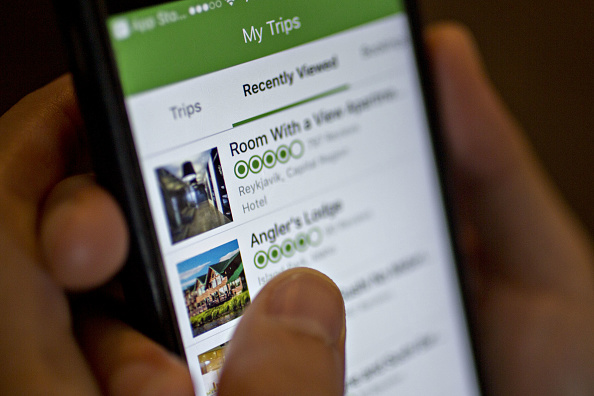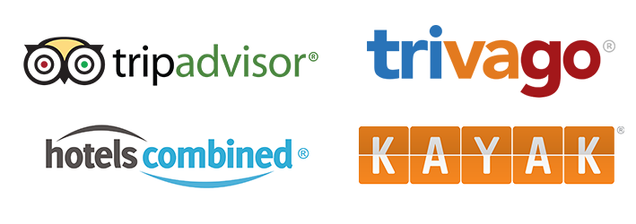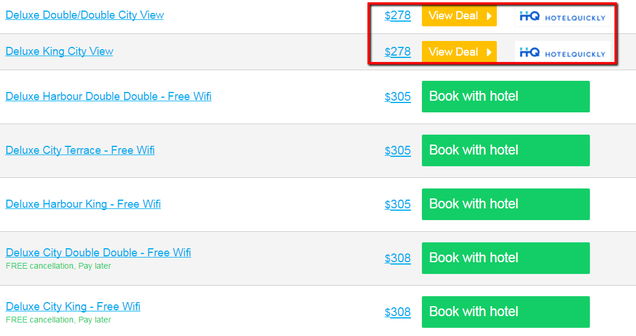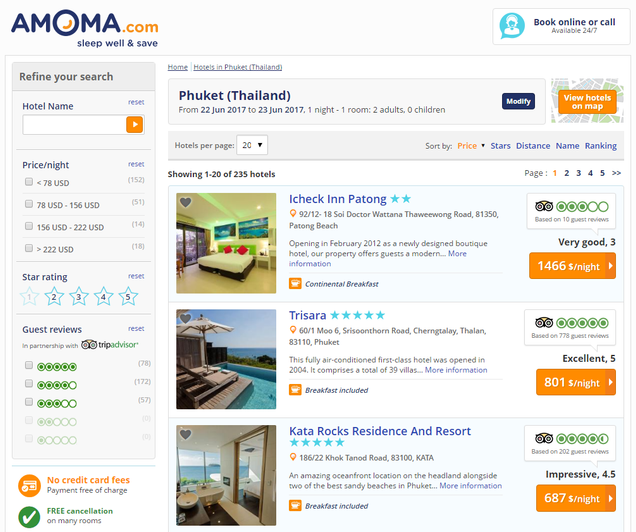Hotel Brand Websites, OTA’s, Meta Search and Wholesalers: A Distribution Dilemma Within The Industry

Photo Source: Andrew Harrer/Bloomberg via Getty Images
By Nick Cohen
The year is 2001, and the world is still recovering from the tragedy of September 11
th.
The travel industry is in a downward spiral as fears of flying and
terrorism ripple across the United States and beyond, and hotels have
lost significant occupancy due to a decrease in demand.
Simultaneously, a fledgling technology is emerging which will
eventually take advantage of the internet explosion, as well as hotel
management’s desperation to fill rooms. It will reshape our industry
forever, and this platform now commonly referred to as Online Travel
Agencies, or OTAs, will allow hotels to easily sell their rooms on the
internet through new consumer facing websites such as Expedia,
Travelocity and Orbitz.
Fast forward to 2017. The OTA’s have gained the majority of market
share for online reservations, and digital platforms like Booking.com
and Ctrip.com have loyal member volumes that far surpass brand
websites. In many cases, the OTA companies are valued well beyond
traditional hotel brands (as of May 2017, Priceline Group has a market
capitalization of nearly USD 92 Billion). They have also helped to
create a new concept as they grew in popularity and scale over the last
number of years, and it was the precedent of transparency. Pricing that
was once hidden to the everyday user, could now be exposed to the whole
world, publicly, with a few clicks online. As OTA channels grew
enormously with time, so did the access to real time rates and
availability for virtually every hotel around the world.
With this concept in mind, from the OTA’s we have seen the rapid
expansion of ‘meta search’ channels. These are one-stop price comparison
platforms where a customer can view a price for a single hotel room
across multiple websites (without having to browse those websites
one-by-one). Sites within this category include Kayak, Trivago,
TripAdvisor, Qunar and Google, and they are all working to simplify the
travel research process for consumers.

Featured above are some of the most popular meta search channels
With the OTA channels continuing to grow through massive marketing
efforts and superior technology, and with meta search sites following
their lead, a relatively new challenge has emerged for hoteliers. It
represents a very complex dynamic between one of the most traditional
ways to sell a hotel room, and one of the most modern ways to sell a
hotel room. This once again all comes back to the concept of price
transparency. Wholesale has been a core business driver in hotels for
many years, helping properties build base business through private
negotiated rates and partnerships. Historically, these wholesalers would
sell their inventory offline to their own private networks of contacts.
Even though the pricing would typically be lower than publicly
available RACK rates, it was a reliable foundation of occupancy for
hotels to build off of.
As technology has become more sophisticated with Application
Programming Interfaces (APIs) readily available, we have seen the rapid
growth of wholesale rates being sold publicly, online, through some of
the powerful meta search channels mentioned above. This means that
wholesalers are selling discounted rates, which directly undercut brand
websites and OTAs, to anyone who has access to the internet. Beyond
just meta search, some OTA websites are now even positioning themselves
as ‘online marketplaces,’ where they too will sell wholesale inventory
directly instead of the inventory provided by the hotels. To remain
competitive and increase market share, online channels want to sell the
lowest price possible, even if it means reducing their own margins by
selling a cheaper room to the customer.

Meta
Search Websites such as HotelsCombined (shown above) showcase wholesale
aggregator sites like Amoma.com and HotelQuickly.com which have prices
that undercut the brand’s direct website and other OTA channels
You would think that hoteliers would want to fix this problem
immediately. Online wholesale business undercuts channels which are much
more profitable such as their direct brand website. This issue however
is multi-layered and is not easy to remedy for the following key
reasons:
Hotels still want wholesale business!
Hotels still maintain strong relationships with a number of wholesale
partners, big and small, and they rely on these partnerships to
generate base business. Turning off these channels would potentially
mean the loss of significant revenues, at least in the short term.
Although wholesale channels can undercut other websites when sold
online, they also still generate incremental business when sold offline
through the traditional method
Finding the source of whole business online can be very difficult
When wholesale rates appears online, it’s generally very difficult to
know which wholesaler specifically is providing that inventory. The
wholesale partners themselves don’t generally sell rooms through their
own websites, but sell their rates through wholesale aggregation
channels such as Amoma.com. It’s channels like Amoma who then sell the
rates online through their own interface, and promote their rates
through larger meta search intermediaries such as Trivago and
TripAdvisor. Generally the only way to find the true source is to make a
test booking online, and then track how that reservation comes into the
hotel’s central reservation system (each reservation is typically
flagged with an inventory source). Many hotels are reluctant to do this
since a booking requires use of a credit card and sometimes even
pre-payment, and then cancellation of that test booking is not always
easy to do. The test booking process is both cumbersome to manage at
scale, and is also financially risky for a hotel if those booking cannot
be cancelled.

Room
bookings can be made through Amoma.com and other wholesale aggregator
websites by anyone online. However, the back end wholesale source for
each booking from Amoma and other channels like it can be very
challenging for a hotel to identify.
Employee incentives are at stake
Within hotel sales departments, team members are still incentivized
to drive wholesale volume, regardless of where that volume is being sold
(offline or online). Wholesale partners generally don’t provide
specifics on how they are selling their inventory, and as long as room
allotments are sold, the responsible sales team members are satisfied.
This is creating an unavoidable rift between the direction of some sales
leaders with the revenue management and digital strategy teams.
So what’s next?
Hotel companies are dealing with this situation in a variety of ways.
Some are cutting off wholesale altogether since they simply can’t
control where their inventory is ending up. Others are maintaining the
partnerships, but are working to move away from static room allotments
and over to dynamic pricing and availability where the hotels have more
control over the inventory they send to the wholesalers. This is a major
problem facing the industry that very much remains unsolved.
If we take ourselves back to the 2001, price transparency was a
challenge for hoteliers. Properties simply didn’t have direct access to a
large enough segment of customers, therefore traditional partnerships
like wholesale was an absolute necessity. With the growth of the OTAs
though, and the emergence of new technologies such as meta search, that
access is no longer an issue. The world is accessible for each hotel
with a few quick key strokes on a computer. It is now only a matter of
time until hoteliers make one of the following decisions:
- Utilize wholesalers purely as another online distribution channel,
selling rates that are parity with every other website (brand.com and
OTAs)
- Remove wholesale out of the channel mix altogether, realizing that
room inventory can be be sold among the multitude of websites and
digital platforms already available



